| Date | Text | |
|---|---|---|
14 Oct 1563
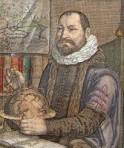
Jodocus Hondius |
birth Jodocus Hondius Jodocus Hondius, Flemish cartographer (died 1612) |
|
14 Oct 1677
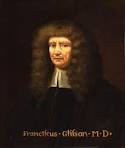
Francis Glisson |
death Francis Glisson Francis Glisson, English physician (born 1599?) |
|
14 Oct 1687

Robert Simson |
birth Robert Simson Robert Simson, Scottish mathematician (died 1768). |
|
14 Oct 1767
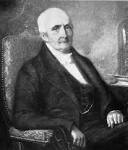
Nicolas-Théodore de Saussure |
birth Nicolas-Théodore de Saussure Born 14 Oct 1767; died 18 Apr 1845 at age 77. Swiss chemist and plant physiologist whose quantitative experiments on the influence of water, air, and nutrients on plants laid the foundation for phytochemistry. |
|
14 Oct 1788
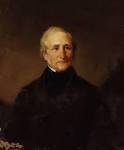
Sir Edward Sabine |
birth Sir Edward Sabine Born 14 Oct 1788; died 26 Jun 1883 at age 94. Irish-English physicist, astronomer and explorer who studied the shape of the Earth and its magnetic field. He was commissioned in the Royal Artillery, and reached the rank of major-general before retiring in 1877. As an explorer, the party's astronomer, he joined the expedition of John Ross to find the Northwest Passage (1818). He also went with Parry on an Arctic expedition (1819-20). Through experiments using a pendulum at different global locations, he determined the shape of the Earth (1821-3). Sabine also studied the earth's magnetic field, and on 6 Apr 1852 announced the link between sunspots and irregular geomagnetic variations. |
|
14 Oct 1788

William Symington |
William Symington (technology) William Symington demonstrates a paddle steamer on Dalswinton Loch in Scotland. |
|
14 Oct 1788

Edward Sabine |
birth Edward Sabine Edward Sabine, Anglo Irish physicist, astronomer and explorer (died 1883) |
|
14 Oct 1803

Aimé Argand |
death Aimé Argand Aimé Argand, Swiss physicist and chemist (born 1750) |
|
14 Oct 1827

John Ferguson McLennan |
birth John Ferguson McLennan Born 14 Oct 1827; died 16 Jun 1881 at age 53. British lawyer and anthropologist who undertook a vast comparative research of the ceremonies of marriage. His theory of social evolution, in which he first used the terms exogamy (marriage outside the group) and endogamy (marriage within the group), stemmed from his interest in the survival of primitive cultures. He did much to stimulate and guide anthropological research. He developed influential theories on cultural evolution, kinship and the origin of religion. McLennan's pioneering work on totems (as survivals of primitive worship of fetishes, plants, animals and anthropomorphic gods) had a great influence upon contemporary social scientists, including Sigmund Freud. McLennan was influenced strongly by Charles Darwin's theory of evolution. |
|
14 Oct 1830

HMS Beagle |
HMS Beagle (exploration) HMS Beagle returns to England from her first voyage, a hydrographic survey of the Patagonia and Tierra del Fuego regions of South America. |
|
14 Oct 1831

Jean Louis Pons |
death Jean Louis Pons Died 14 Oct 1831 at age 69 (born 24 Dec 1761). French astronomer. |
|
14 Oct 1834

Black-American patent |
Black-American patent In 1834, Henry Blair of Glenross, Maryland, received a U.S. patent on a corn planter (No. X8447). Two years later, on 31 Aug 1836, he was also issued a patent on a cotton seed planter (No. 15). Blair was born in Maryland about 1807 and lived until 1860. He was a successful farmer whose inventions met a need to increase efficiency in farming. His patents were signed with a simple "X" because he had not learned to read or write. Henry Blair was the second African-American to hold a patent. For some time he had been regarded as the first, until it became better known that the first African-American on record to be granted a patent was Thomas Jennings for a "dry-scouring" cleaning process (3 Mar 1821, No. X3306). |
|
14 Oct 1840

Friedrich Wilhelm Georg Kohlrausch |
birth Friedrich Wilhelm Georg Kohlrausch Born 14 Oct 1840; died 17 Jan 1910 at age 69. German physicist who investigated the properties of electrolytes (substances that conduct electricity in solutions by transfer of ions) and contributed to the understanding of their behaviour. Some of Kohlrausch's pioneering achievements include conductivity measurements on electrolytes, his work on the determination of basic magnetic and electrical quantities, and the enhancement of the associated measuring technologies. It was under his direction that the "Physikalisch-Technische Reichsanstalt" (the then Imperial Physical Technical Institute in Germany) created numerous standards and calibration standards which were also used internationally outside Germany. |
|
14 Oct 1857

Elwood Haynes |
birth Elwood Haynes Born 14 Oct 1857; died 13 Apr 1925 at age 67. American inventor who built one of the first successful gasoline-powered automobiles. In 1886, when natural gas was found in his hometown of Portland, Indiana, Haynes organized a company to supply it to the town. He devised a method to dehydrate the gas prior to its being pumped through the lines. Also in 1886, he invented a small vapor thermostat used on natural gas. In 1893, he purchased a gasoline engine and designed a "horseless carriage." When Haynes was searching for an alloy that would make a durable spark plug electrode, he invented stellite alloy, which invention is still contributing to society today. Harder than steel and resistant to corrosion, this metal now plays an important part in fabrication of aeronautical materials suitable for exploration of outer space. |
|
14 Oct 1858

Johan Herman Lie Vogt |
birth Johan Herman Lie Vogt Born 14 Oct 1858; died 3 Jan 1932 at age 73. Norwegian geologist and petrologist who pioneered in the use of physical-chemical methods in the study of the origin of igneous rocks and ores. He did important work on the chemistry of silicates as the basis for igneous rock petrology, and on differentiation in cooling magmas. Vogt is often called the father of modern physiochemical petrology. He also made studies of ore geology, especially magmatic ores. Petrology is a branch of geology that deals with the origin, composition, structure, and alteration of rocks. |
|
14 Oct 1863

Nobel's first patent |
Nobel's first patent In 1863, Alfred Nobel was granted his first patent, a Swedish patent for the preparation of nitroglycerin. The end of the Crimean War (1856) brought bankruptcy for his father, Immanuel Nobel, whose factory manufactured war materiel. Studying chemistry, Alfred learned of the powerful new explosive, nitroclycerine. Around 1860, Alfred conducted repeated experiments involving great risks. He succeeded in manufacturing sufficient quantities of nitroglycerine without any mishaps. His father had been making similar experiments, but with less success. When his father realized his son's greater discoveries, he assisted Alfred patent the explosive that he aptly called "blasting oil." Later, in 1868, Nobel patented dynamite as a form for safer handling. |
|
14 Oct 1878

Bramall Lane |
Bramall Lane (technology) The world's first recorded floodlit football fixture is played at Bramall Lane in Sheffield. |
|
14 Oct 1884
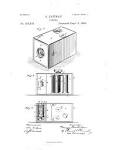
Eastman patent |
Eastman patent In 1884, the first U.S. patent for transparent paper-strip photographic film on a temporary paper backing was issued to George Eastman of Rochester, N.Y. (No. 306,594). The film consisted of a layer of paper and a coating of insoluble sensitized gelatin emulsion, separated by a layer of soluble gelatin to enable separation after developing the exposed film. He invented this film in Feb 1884 and applied for the patent the next month. It was flexible, could be wrapped compactly on a roller and used within a roll-holder instead of the glass plate photographic materials then in use. It offered greater convenience, less weight and freedom from breakage. He began commercial manufacturing of the product on 26 Mar 1885 |
|
14 Oct 1884
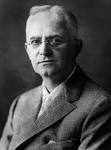
George Eastman |
George Eastman (chemistry) George Eastman is granted his first patents for photographic roll film in the United States. |
|
14 Oct 1885
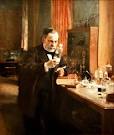
Pasteur's rabies vaccine |
Pasteur's rabies vaccine In 1885, after 15-year-old Jean Baptiste Jupille was severely bitten while with his bare hands he killed an attacking rabid dog to protect five other young shepherds in Villers-Farley, France. He shortly became the second person treated by Louis Pasteur's experimental vaccine for rabies. He was fortunate to be taken to Pasteur's laboratory. Pasteur's collaborator Emile Roux had thought of attenuating the power of the infection by exposing strips of fresh spinal marrow taken from a rabbit that had died of rabies to dry, sterile air for various lengths of time. The vaccine was a small piece of marrow ground up and suspended in sterilized broth. It had first been used on Joseph Meister on 6 Jul 1885. By 12 Apr 1886, 726 people had been treated. |
|
14 Oct 1885

Thomas Davidson |
death Thomas Davidson Died 14 Oct 1885 at age 68 (born 17 May 1817). Scottish naturalist and paleontologist who became known as an authority on brachiopods, known as "lamp shells" because some varieties resemble a Roman oil lamp, a phylum of bottom-dwelling marine invertebrates (Brachiopoda). Some of these fossils are among the oldest found. His major work, Monograph of British Fossil Brachziopoda, was published by the Palaeontographical Society (1850-1886). Together with supplements, this comprised six quarto volumes with more than 200 plates drawn on stone by the author. Upon his death, he bequeathed his fine collection of recent and fossil brachiopoda to the British Museum. |
|
14 Oct 1888
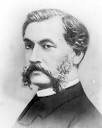
Louis Le Prince |
Louis Le Prince (technology) Louis Le Prince shoots the first recorded film, Roundhay Garden Scene, in Leeds, England, using a single lens camera and Eastman paper film. |
|
14 Oct 1891
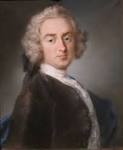
Sir James Gray |
birth Sir James Gray Born 14 Oct 1891; died 14 Dec 1975 at age 84. English zoologist who played a leading part in changing the main objective of 20th-century zoological research from evolutionary comparative anatomy to the functional analysis of living cells and living animals, particularly through his editorship (1925-54) of the Journal of Experimental Biology. He authored How Animals Move (1953), and Animal Locomotion (1968). Gray applied mechanical principles to the analysis of animal movement. In 1936, his calculations started a controversy, called Gray's paradox, concerning comparisons of swimming efficiency in fish and in submarines. Energetics calculations suggest that fish and other ocean denizens are much more efficient swimmers than subs, while theoretical hydrodynamic calculations suggest they are not. |
|
14 Oct 1900

W. Edwards Deming |
birth W. Edwards Deming Born 14 Oct 1900; died 20 Dec 1993 at age 93. W(illiam) Edwards Deming was an American statistician, the father of "Total Quality Management." After WW II, he contributed to Japan's economic recovery by recommending statistical methods of quality control in industrial production. His method embraced carefully tallying product defects, examining their causes, correcting the problems, and then tracking the results of these changes on subsequent product quality. In his career before the war, he had developed statistical sampling techniques that were first used in the 1940 U.S. census. From the 1980's in the U.S. Deming taught quality control through the statistical control of manufacturing processes for companies such as Ford, Xerox, and GM. |
|
14 Oct 1908
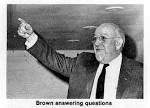
George Harold Brown |
birth George Harold Brown Born 14 Oct 1908; died 11 Dec 1987 at age 79. American electrical engineer, a pioneer in radio-thermics, who made major contributions to the development of radio and television broadcast antennas. In 1936, Brown invented the so-called turnstyle antenna for television broadcasting. Because of this, the Federal Communications Commission (FCC) adopted a TV system of 441 lines. In 1938, Brown developed the vestigial sideband filter for use in television transmission, doubling the horizontal resolution of television pictures at any given bandwith. During WW II, with RCA's researchers, George Brown's group used radio-frequency heating in the bulk dehydration of penicillin at E.R. Squibb, a "sewing machine" for thermoplastics, and more consistent riveting and welding techniques. |
|
14 Oct 1910
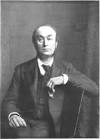
Sydney Ringer |
death Sydney Ringer Died 14 Oct 1910 (born 1835). English physician. |
|
14 Oct 1914

Raymond Davis, Jr. |
birth Raymond Davis, Jr. Raymond Davis, Jr. (died 2006), American chemist and physicist, winner of the Nobel Prize in Physics (2002). |
|
14 Oct 1922
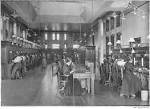
Telephone exchange |
Telephone exchange In 1922, the first automated telephones, the Pennsylvania exchange in N.Y. City, become operational. |
|
14 Oct 1934

Robert McCorkle Netting |
birth Robert McCorkle Netting Born 14 Oct 1934; died 4 Feb 1995 at age 60. U.S. anthropologist who established cultural ecology as a scientific discipline. Netting earned international recognition in the field of cultural ecology for documenting the strategies used by residents of challenging habitats to survive. He covered this area extensively. Netting was involved with and studied human-environment interactions, focusing on subsistence and development issues. He was as loyal to geography as he was to anthropology. Netting filled the gap between geography and anthropology better than anyone else, especially from the anthropological side. |
|
14 Oct 1940

Heinrich Kayser |
death Heinrich Kayser Died 14 Oct 1940 at age 87 (born 16 Mar 1853). Heinrich (Gustav Johannes) Kayser was a German physicist who discovered the presence of helium in the Earth's atmosphere. Prior to that scientists had detected helium only in the sun and in some minerals. Kayser's early research work was on the properties of sound. In collaboration with the physicist and mathematician Carl D.T. Runge, Kayser carefully mapped the spectra of a large number of elements. He wrote a handbook of spectroscopy (1901–12) and a treatise on the electron theory (1905). |
|
14 Oct 1946
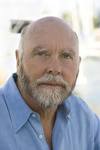
J. Craig Venter |
birth J. Craig Venter Born 14 Oct 1946. American molecular geneticist who pioneered the use of automated gene sequencers. In 1990, he developed "expressed sequence tags" (ESTs), a new strategy for gene discovery and tagging that revolutionized the biological sciences. In 1995, Venter, in collaboration with Hamilton Smith, determined the DNA sequence of the entire genome (all the genetic material of an organism) of Hemophilus influenzae, a bacterium that causes earaches and meningitis in humans. The achievement marked the first time that the complete sequence of a free-living organism had been deciphered, and it was accomplished in less than a year. He founded the Institute for Genomic Research (TIGR). By 2000, his company Celera Genomics sequenced the human genome. |
|
14 Oct 1946

Kay Redfield Jamison |
birth Kay Redfield Jamison Kay Redfield Jamison, American clinical psychologist |
|
14 Oct 1947

Air pollution control district |
Air pollution control district In 1947, the Los Angeles County Board of Supervisors established the first U.S. air pollution control program by creating the L.A. County Air Pollution Control District. It responsed to the serious smog in the city on 26 Jul 1943 when a noxious haze of smoke and exhaust fumes reduced visibility to under three blocks. From Oct 1943, a Smoke and Fumes Commission studied the problem. It named many cause: locomotive smoke, diesel truck fumes, back-yard rubbish burning plus the mountain topography, stagnant winds and atmospheric temperature inversions. On 31 Jul 1954, a six-year research program reported that the smog was caused by the chemical reaction of sunlight on auto and industrial emissions. London's killer Great Smog on 5 Dec 1952, led to the Clean Air Act of 1956. |
|
14 Oct 1947

First supersonic flight |
First supersonic flight In 1947, Chuck Yeager, a WW II fighter pilot, became the first human to fly faster than the speed of sound, breaking through the sound barrier in a rocket powered Bell XS-1 airplane over Murac Dry Lake, California. The four rocket motors of this tiny needle-nosed research craft could gulp an entire supply of fuel in 2-1/2 minutes. To save fuel, the Bell XS-1 was carried aloft by a B-29 then released, and Yeager fired its rockets. At 37,000 feet the X-1 flew well, but began to buffet as it approached the sound barrier. When an airplane travels at the speed of sound the air particles ahead are compressed into an invisible “wall of thick air.” Others flying with less powerful engines could not push through this wall, with hazardous and deadly results. Yeager succeeded. |
|
14 Oct 1958

Sir Douglas Mawson |
death Sir Douglas Mawson Died 14 Oct 1958 at age 76 (born 5 May 1882). Australian geologist and explorer whose travels in the Antarctic earned him worldwide acclaim. |
|
14 Oct 1960

Metric System |
Metric System In 1960, the fourth legal definition of the metre was made to be 1,650,763.73 wavelengths in vacuum of the orange-red light radiation of the krypton-86 atom (transition between levels 2p10 and 5d5). It was adopted at the 11th meeting of the Conférence Générale des Poids et Mesures (CGPM), which also specified the seven basic units of the SI system. It was superceded by a fifth definition of the metre on 20 Oct 1983, based on the speed of light. The definition in terms of wavelengths of the kryton spectral line wasthen 100 times more accurate than the previous third legal definition adopted in 1889. (The third legal definition on 28 Sep 1889, was based on the distance between two reference markson the International prototype metre bar, made of platinum-iridium, (90% Pt, 10% Ir), cross section X, at a 0 °C temperature.) |
|
14 Oct 1968
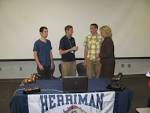
Outer-space telecast |
Outer-space telecast In 1968, the first outer-space live telecast was beamed from Apollo VII in orbit. Captain Walter Schirra, Jr., Major Donn Eisele and Major Walt Cunningham showed views of the satellite and views through the windows. The primary objectives for the Apollo VII engineering test flight, were simple: "Demonstrate Command/Service Module (CSM) and crew performance; demonstrate crew/space vehicle and mission support facilities performance during a manned CSM mission; demonstrate CSM rendezvous capability." The Apollo VII was launched 11 Oct 1968. For nearly 11 days, the Command Module was run through numerous tests. and was recovered after a 260-hour flight and 163 orbits. |
|
14 Oct 1974

Bradley Dewey |
death Bradley Dewey Died 14 Oct 1974 at age 87 (born 23 Aug 1887). American chemical engineer, industrialist and inventor. |
|
14 Oct 1982
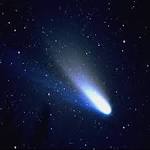
Halley's Comet |
Halley's Comet (astronomy) Halley's Comet: First spotted in the sky after 70 year return. |
|
14 Oct 1984

Sir Martin Ryle |
death Sir Martin Ryle Died 14 Oct 1984 at age 66 (born 27 Sep 1918). English radio astronomer who worked on radar for British wartime defense. After WW II, he became a leader in the development of radio astronomy by designing revolutionary radio telescope systems to use for accurate location of weak radio sources. With his aperture synthesis technique of interferometry, he and his team located radio-emitting regions on the sun and pinpointed other radio sources so that they could be studied in visible light. Ryle observed the most distant known galaxies of the universe. His 1C - 5C Cambridge catalogues of radio sources led to the discovery of numerous radio galaxies and quasars. For his aperture synthesis technique, Ryle shared the 1974 Nobel Prize for Physics (with Antony Hewish), the first such recognition of astronomical research. He was the 12th Astronomer Royal (1972-82). |
|
14 Oct 1991

Walter M. Elsasser |
death Walter M. Elsasser Died 14 Oct 1991 at age 87 (born 20 Mar 1904). Walter Maurice Elsasser was a German-American physicist who contributed to science in several disciplines. In atomic physics, he interpreted electron scattering. In geophysics, during the 1940's, he provided insight into radiative heat transfer in the Earth's atmosphere, and presented the currently accepted dynamo theory to explanation the origin and properties of the Earth's magnetic field. He proposed that this magnetic field resulted from electric currents induced in the fluid outer core of the Earth. He pioneered study of the magnetic orientation of minerals in rocks to reveal the Earth's history of its magnetic field. The last fifty years of his life were to a large part given to studies relevant to biology: a theory of organisms. He wished to establish the distinction between living and inanimate matter. |
|
14 Oct 1993

Gene therapy |
Gene therapy In 1993, Dr. Michael J. Walsh of the Howard Hughes Medical Institute announced that cystic fibrosis can be corrected by gene therapy. |
|
14 Oct 2004
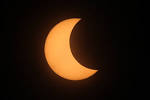
Partial solar eclipse |
Partial solar eclipse (astronomy) Partial solar eclipse |